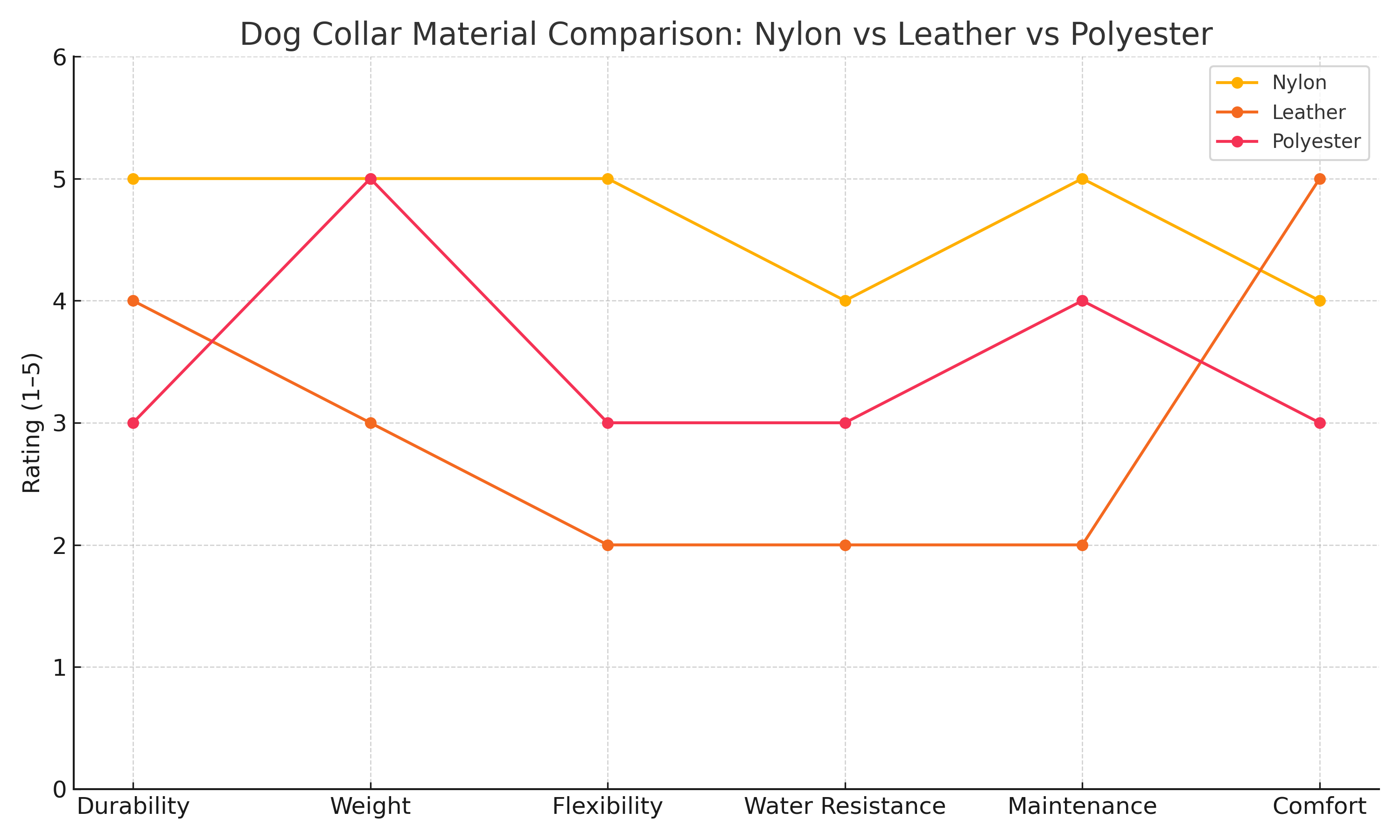Nylon Dog Collar Series – Part 1 of 3
Meta Description: Discover why nylon dog collars remain the go-to choice in 2025. Learn about their strength, skin safety, and rising eco-friendly trends loved by pet owners.
1. Why Nylon? Science-Backed Benefits
Targeting search intent: “are nylon dog collars good”, “nylon vs leather collar pros and cons”
Nylon dog collars have become a go-to choice for pet owners and retailers alike, thanks to their durability, affordability, and everyday practicality. Whether your customers are looking for a reflective collar for nighttime walks, an adjustable model for growing puppies, or a heavy-duty option for large breeds, nylon remains one of the most versatile materials in the pet accessory market.
Compared to leather—which can crack, stiffen, and requires routine maintenance—nylon is washable, quick-drying, and odor-resistant, making it ideal for daily wear, training sessions, and outdoor adventures.
Quick Benefits at a Glance
Lightweight and breathable for all-day comfort
Adjustable sizing ensures a secure, safe fit
Easy to clean—machine washable at 30°C
Suitable for both puppies and large, active breeds
This combination of comfort, function, and ease of care makes nylon collars a reliable, customer-favorite option for both new dog owners and experienced handlers.

Feature / Material | Nylon | Leather | Polyester |
Durability | High tensile strength (800–1,200 lbs) | Very durable, but can crack if not maintained | Good abrasion and stretch resistance |
Weight | Lightweight | Medium weight | Lightweight |
Flexibility | Remains pliable in all temperatures | Can stiffen in cold or humid climates | Moderate flexibility |
Water Resistance | Quick-drying, absorbs some water | Poor (absorbs moisture, stiffens) | Dries slowly, but resists light moisture |
Maintenance | Low (machine washable) | High (requires oiling and care) | Low (easy to clean) |
Comfort | Soft, adjustable | High-end feel, forms to neck over time | Smooth texture, soft edges |
Best For | Daily walks, training, basic control Ideal for small to medium dogs | Dry climates and owners seeking a premium feel | Active or small dogs needing light control |
Sources: SGS Pet Product Safety Report 2024, Journal of Veterinary Science, Minardipets Material Trials
Nylon collars are also often made from FDA-compliant, BPA-free webbing, which is safer than cheap PVC materials. The lightweight yet high-tensile design ensures security for strong pullers like Huskies, while maintaining comfort for everyday use.
Why It Matters: This data supports nylon’s reputation as a high-performance collar material—resilient in tough environments, gentle on skin, and built for long-term use.
As the pet industry evolves, nylon dog collars are being enhanced with next-generation features that appeal to both health-conscious and eco-conscious buyers.
Antimicrobial Technology
Recent lab tests by VetDerm Labs show that silver-ion infused nylon can reduce bacterial odor buildup by up to 72% compared to untreated nylon after 7 days of use. This innovation is particularly valuable for active dogs, water-loving breeds, and humid climates where collars tend to smell faster.
Search Intent Match:
“odor-resistant dog collar”
“antimicrobial collar for dogs”
“nylon dog collar that doesn’t smell”
Sustainable Materials on the Rise
The demand for eco-friendly dog gear is also climbing fast. According to Statista (2025), global interest in recycled ECONYL® nylon—a regenerated material made from ocean plastic and waste—has surged 140% year-over-year, especially in the EU and UK markets.
Brands offering vegan, biodegradable, or OEKO-TEX® certified nylon collars are now favored by retailers looking to meet rising environmental expectations.